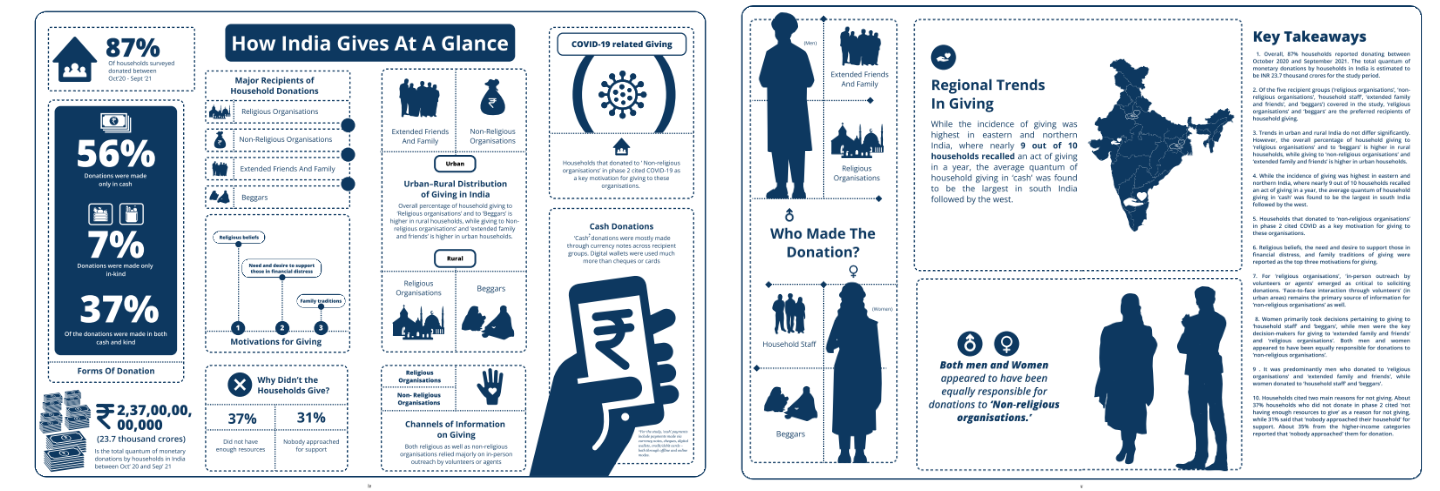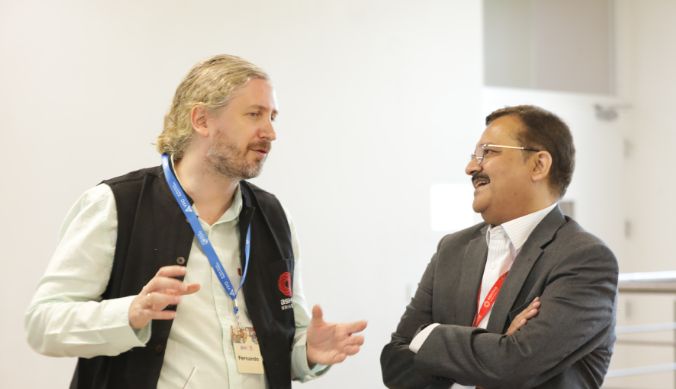Indian Households donated INR 23.7 thousand crores in 2020-21 with maximum donations going to Religious Organisations
Women are the primary decision-makers in giving to ‘household staff’ and ‘beggars’ while men make decisions on giving to ‘extended family and friends’ and 'religious organisations’

Office of PR & Communications
20 September, 2022 | 4m readThe Centre for Social Impact and Philanthropy (CSIP) at Ashoka University launched a study on ‘How India Gives, 2020-21’ in collaboration with the World Panel Division of Kantar to provide a deeper understanding of the formal and informal ways in which Indians donate for philanthropic causes. The overall incidence of giving is high, especially during and after the pandemic. Interviews with a panel comprising of approximately 81000 households across 18 states provides an understanding of the giving patterns across geographies and socio-economic groups. The study revealed the largest portion of India’s household donations is driven by religious beliefs, followed by the desire to support someone in financial distress and to follow family traditions.
Giving is not a new phenomenon in Indian households and it has long been a part of daily lives. Giving takes various forms, as this study captures, giving in ‘cash’, ‘in-kind’ and ‘volunteering’. The total market size for financial donations by households in India is estimated to be INR 23.7 thousand crores in one year. South India donated the highest average amount followed by West India, while incidences of giving were highest in Eastern and Northern India. Additionally, women make the majority of decisions about giving to ‘household staff’ and ‘beggars’, while men make most decisions about giving to ‘extended family and friends’ and ‘religious organisations’. The households who did not donate cited ‘lack of resources’ and ‘nobody had approached them’ as important reasons for not making donations.
Sharing her thoughts on this study, Ingrid Srinath, Director, Centre for Social Impact and Philanthropy said, “The scale of giving by households across India has long been elusive. This pioneering research establishes a baseline against which it will be possible to track changes over time, responses to policy or other changes and to make comparisons with other countries.”
The study reveals that 64% of household giving was directed towards ‘religious organisations’ and 61% towards ‘beggars’ while the lowest incidence of giving was directed towards ‘household staff’ at 3%. Word of mouth from family and friends served as an important source of information and accounted for 27% of the total religious donations. It is also interesting to note that the percentage of total share of households who donated in rural India is higher than urban India. This survey did not reveal a high incidence of ‘volunteering’ among households.
Speaking about the magnitude of the study, Swati Shresth, Research Director, Centre for Social Impact and Philanthropy said, “The report is the first comprehensive pan-India report that captures household-giving trends across geographies, socio-economic groups, demographics, and forms of giving. Existing studies in the domain have smaller sample and predominantly represents urban English-speaking Indians. To address this gap, the findings of the study are drawn from ~81,000 households across 18 states and covers both rural and urban India.”
The study builds on earlier research such as – The ‘Everyday Giving in India Report 2019’ by Sattva and the ‘India Philanthropy Reports by Bain & Company, Dasra and Bridgespan India.
View Report












